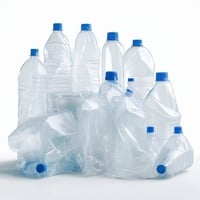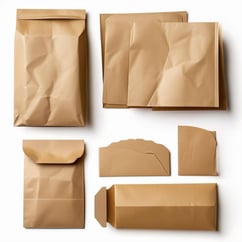Plastic packaging often gets a bad rap, and rightfully so – its environmental impact is a serious concern. However, the truth about sustainable packaging is more nuanced than simply "plastic is bad, paper is good." The best choice depends on a variety of factors, like durability, how well it protects against moisture, and its overall environmental footprint. Sometimes, plastic can even be the more sustainable option. So, how do you make the right decision for your business?
Let's Talk About the Environmental Impact of Plastic and Paper

Plastic Packaging: A Closer Look
Plastic packaging faces criticism for contributing to pollution, especially in our oceans. It can take centuries to break down, creating long-lasting waste problems. However, plastic also offers some key advantages:
- Durability
Plastic is strong, lightweight, and resistant to tears and punctures. This often means you need less of it to protect your products. - Moisture Resistance
Unlike paper, plastic excels at repelling water and humidity, making it perfect for food, medical supplies, and industrial uses. - Recyclability
While we need better plastic recycling infrastructure, many types, like PET and HDPE, can be recycled and reused effectively.
Paper Packaging: Is it Always Greener?

Paper is frequently seen as the eco-friendly choice because it's biodegradable and comes from renewable resources. However, its sustainability depends on things like how it's sourced, how it's made, and how it's disposed of:
- Resource-Intensive Production
Making paper uses a lot of water and energy, which can sometimes lead to a bigger carbon footprint than plastic. - Lower Durability
Paper is more easily damaged. To make it stronger or more water-resistant, it often needs extra materials or coatings (which can even be plastic-based). - Compostability
Paper naturally decomposes, unlike plastic, which makes it a good option for packaging that's only used briefly and then thrown away.
When Does Plastic Make More Sense Sustainably?

While reducing plastic is a crucial part of sustainability, there are situations where it's the better choice:
- Products Sensitive to Moisture
Paper packaging can break in humid or wet conditions. Plastic might be more reliable for perishable goods. - Reusable Applications:
When designed for reuse, plastic can be very sustainable. Think of durable plastic crates, pallets, and containers – they reduce the need for single-use materials. - Lightweight Shipping
Plastic is often lighter than paper alternatives, which leads to lower fuel consumption and fewer carbon emissions during transport.
The Future of Sustainable Packaging
Instead of thinking it's an either/or situation with plastic and paper, businesses should prioritise reducing waste, using recycled materials, and investing in innovative sustainable packaging solutions. To meet this goal, we help businesses of all sizes make informed decisions about their packaging, balancing performance and environmental responsibility.
Ready to explore how to make your packaging more sustainable?
With over 30 years of packaging experience, products and process knowledge contact us today to see how we can move your business forward on your path to a more sustainable future. Send us a message, call us at 01543 396 700, or email us at sales@allpack.uk.com